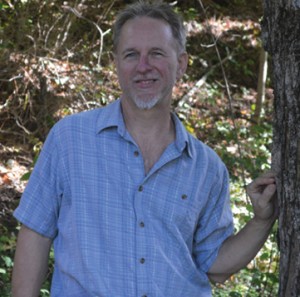Column: Former project manager parlays personal plant battle into professional weed war
When John Messerschmidt bought a rural weekend home in Ulster County”™s High Falls, he found himself with a nasty case of poison ivy.
The war was on.
He went online and found the most effective method of eradicating poison ivy was to pull it out by the roots rather than spraying it. Clothed in special attire and armed with lotion and soap recommended on the Internet, he forged ahead on his mission to remove all the poison ivy in his yard.
What was then a curse, years later became a blessing. The project manager for high-end interior renovations lost his Manhattan-based job in the economic crash in 2008 and went looking for an alternative source of income. He noticed no one offered this service. Thus was born Poison Ivy Patrol Specialty Landscaping Inc., serving the mid-Hudson Valley.
“Poison ivy lives on the edges,” Messerschmidt said, “hiding in weeds and bushes, attacking when you least expect it. Since the rash doesn”™t show up for 24 hours or more, you may not even know where you got it. You thought you”™d clean up your yard, and the next day you”™re rushing to the doctor with a rash all over your body.”
Poison ivy isn”™t the only invasive plant threatening the landscape. Messerschmidt became aware of other invasives such as Japanese knotweed, bittersweet, wisteria, and stiltgrass, which have invaded the entire Hudson Valley.
“For 10,000 years, plants, insects and animals existing in the New York region have evolved together,” Messerschmidt said. “Foreign plant species started coming in on ships as stowaways in crates, soil and ballast water. Now, they are coming from nurseries and big-box stores selling foreign flowers and shrubs with foreign soil. They upset the ecological balance. Since insects and animals stay away from them, native species become decimated as the invaders spread out. Forested areas become dead zones with little wildlife.
“These invasive plant species are not found deep in the forest. You will find them in soils disturbed from plowing and construction, bordering yards and parking lots, next to roads and train tracks and under power lines. They only go where people are.”
Knotweed is of particular concern to the warriors against unwanted species.
“Drive along the Saw Mill Parkway in lower Westchester and you will see what the upper reaches of the mid-Hudson Valley will look like in the future,” Messerschmidt said. “The species is hard to rout out, having a deep, soft root ball. If you dig it out and leave shoots, they will grow new plants.
“People call me to remove their poison ivy and, when I get there, I can see they have a much bigger problem of a proliferation of other invasive species.”
Messerschmidt has a team of eight to draw upon to clear out any degree of infestation.
“We can clear out a huge area and bring health and beauty to what was once a tangled up mess of vines and bushes. A good thing can be bad when there”™s too much of it. One client”™s backyard was completely overtaken by forsythia,” Messerschmidt said. “In two days, we cut it down and dug up the roots. They have reclaimed their yard.”
Poison Ivy Patrol Specialty Landscaping served approximately 300 new clients this year and is growing.
“Two thousand sixteen will see a new field office in Putnam Valley to handle the growing demand there,” the owner said.
Although he numbers wild rose bushes among offending species, he does tolerate a hedge of them on his property on Rondout Creek to protect his privacy.
Challenging Careers focuses on the exciting and unusual business lives of Hudson Valley residents. Comments or suggestions may be emailed to Catherine Portman-Laux at cplaux@optonline.net.
